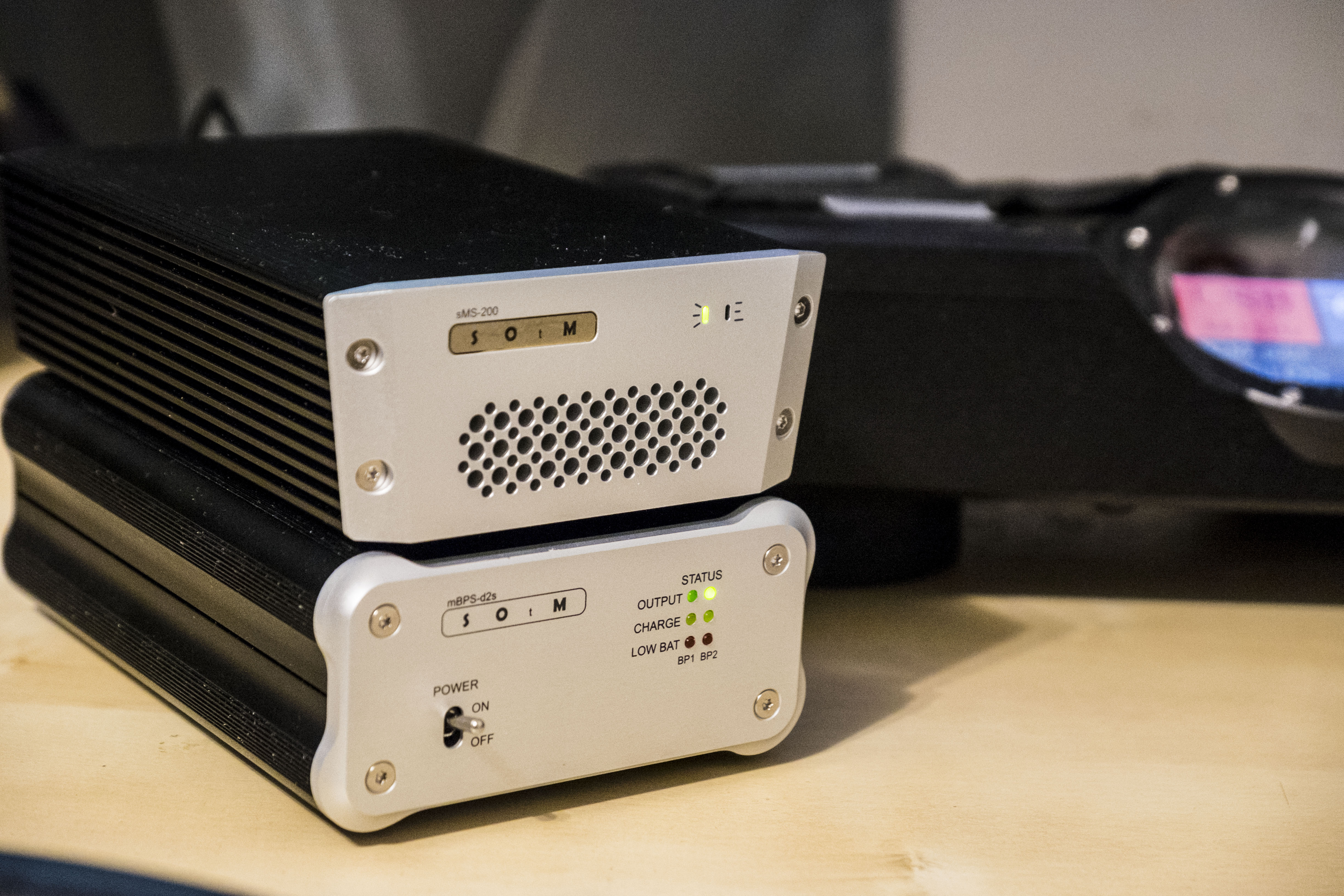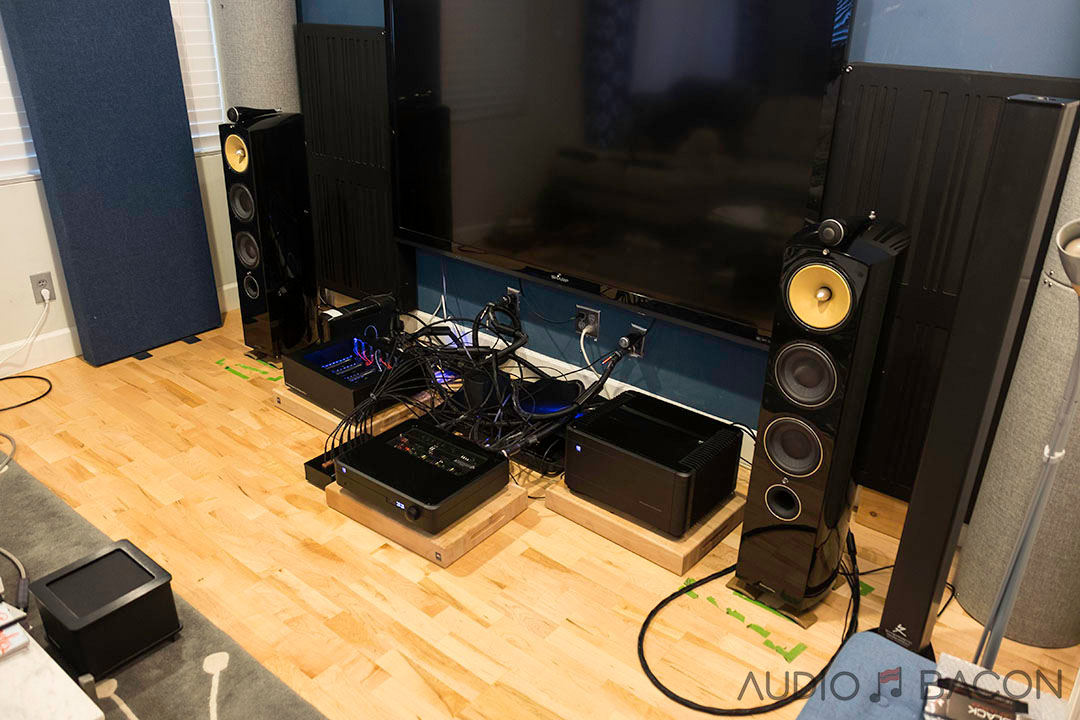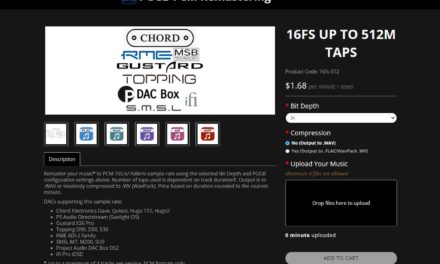Sound
Contents
I haven’t used the descriptor “holographic” for a very long time. Well, today’s the day I bring it up again. The AudioWise Opto-DX embraces spatial control and resolution with natural articulation. It’s not just a hyped or exaggerated presentation but one of weight, presence, and aural gradations. It’s able to position and organize the sound in a way where nothing ever overlaps or overpowers each other. Flutes and bells shine while saxophone and piano play never gets buried under the percussions.
Let’s go over a few examples. I spent time connecting and disconnecting the OPTO-DX for direct comparisons. Luckily they were very easy to hear.
Rodrigo y Gabriela – Mettal EP

Rodrigo y Gabriela won their first-ever Grammy for Best Contemporary Instrumental Album this year. I’m a huge fan and have attended most of their concerts over the years. Here we have their new EP: Mettal.
This album is very well recorded. Midway through Battery, there are sections where the guitar plays in the center while the other guitar quickly matches tempo. With the OPTO-DX, the central guitar is more naturally focused and has more tangibility and steel in the strums. You could hear the gradations and delineation of the strings for both guitar players very distinctly. I wrote “like an acoustic rainbow” in my notes to describe this. It’s to the point where it feels like you’re in the presence of the vibrations of a real guitar. You just know there are two different performers. In addition, transient speed and clarity are otherworldly. This quality was also true for the other two tracks on this EP.
Removing the OPTO-DX and the differences are clear. Out of the gate, the OPTO-DX has a much blacker background. I thought it was already pitch black – but this takes it to “black hole” levels. There’s no blending or blurring of anything. Reproduction is absolutely crisp and pristine. Secondly, the low-level details and micro-dynamics are more masked by the chaotic rhythm. There’s not as much nuance or detail between the strums and percussive knocks. It’s also more difficult to tell who’s playing what and how many guitars are involved. Hearing this distinction is what we audiophiles mean by transparency. Transient speed is also slower – but the sound is warmer. So, there are simply more blood flow and woodiness without the OPTO-DX. At least to my ears.
Warming it up…
There’s nothing wrong with cool and neutral, but a natural color is non-negotiable for me. I tried a few cable swaps to see if I could warm it up a bit. The WAVE High Fidelity STREAM, a set of Monoprice BNC cables, and Final Touch Audio Callisto USB cable seem to have done the trick. This USB cable (thanks goes out to reader David Botting for the recommendation) not only improved the tonal quality of the sound – it added a nice layer of density to the sound. Although still not golden enough for my tastes, this configuration made listening more enjoyable.
Pat Metheny – From this Place

This album is full of dynamic and ambient bits to stress test your stereo system. Most importantly, it emphasizes the enormous palette of talented performers. The collaborative synergy between guitar, bass, drummer, and piano playing makes for a very enthralling listen.
I believe the OPTO-DX’s strength is showcased very well here. It has this ability to reconstruct the recording’s atmospheric intent and makes the experience so much more immersive. This is evident from the material impact and brushes of cymbals and drums – to the palpable harmonica in Past in Us. The individual pieces are harmonized beautifully. When tracks get dramatic and interesting – the tonal variations are always complimentary and not combative. This is very impressive as I’ve only heard this level of resolve in much pricier systems.
Removing the OPTO-DX and the experience is quite different. As mentioned above, the tonal color still seems more natural without the OPTO-DX. Not much of a surprise to me since this is generally the expected tradeoff. However, the presentation is thinner and more “disconnected.” They’re more piecewise and independent rather than being joined by the same acoustic dust in the room. With the OPTO-DX, they always sound like they’re playing in the same room. Also, the feel of the album isn’t as intense, rich, or refined. Consequently, the timbre of each instrument is also a little bit lost and mixed in with the other performers. The bass notes, in particular, bleed into the piano notes. Without the OPTO-DX, the difficulty in handling the textural complexities is very apparent. Needless to say, the improvement in transparency is enormous with the OPTO-DX.
Halsey – Manic

I’ve heard this album a few dozen times – and, once again, it sounds very different with the OPTO-DX in place. The additional atmosphere and depth took me by surprise. For example, it’s very apparent in the popular You Should Be Sad. Where backup vocals and extra strings and synths reveal themselves with more layers. Additionally, 929 is one of my favorite tracks as you get a taste of Halsey’s speaking and singing voice. I tried hard to listen for any artificialness and grain – but this track sounded completely analog. Her voice is nuanced, weighted, and faithfully molded.
Taking the OPTO-DX off the chain again – and the sound becomes leaner, edgier, and more laid back. The music just doesn’t glide nearly as effortlessly. It also sounds flat with a less tangible presence. The instrumentation and voices also don’t quite have the same level of tactility. The one thing that does sound better (I’m sure you could guess by now) – is a truer more convincing tonal quality. Voices just seem to have more soul to them. You’re basically trading tonal warmth for – pretty much everything else. The OPTO-DX sounds very natural otherwise.
Essentially, without the OPTO-DX you’ll get a (relatively) grainer and fuzzier sound with a more organic tone. But with the OPTO-DX, you get a straight liquid, dense, analog sound with much better separating, imaging, and sonic curvatures. Bass is not only punchy and powerful – it has plenty more detail. The OPTO-DX just digs way into the recordings but does so in a realistic, non-artificial way. With the OPTO-DX, timbre distinction is incredible but the overall color is closer to neutral. Which may be a good thing for some (but not for me).

Less RF Noise = Less Golden?
From my experience with other “noise eliminators” – a lot of them seem to remove some of the “blush” or “essence” in the midrange. Yes, it’s less bright but the tone seems to get darker than “golden.” My speculation is that since most of these recording studios don’t even bother going to this level of isolation. So “cleaning it up” this much will improve coherence, resolution, and transparency – but may take away from other areas – such as tonality. This is just my opinion based on what I’ve heard over the years.









Jay, have you compared the mTT2 using Stream, OptoDX, and simply optical (knowing the upscaling will be limited) to see which is the best overall trade off? Optical should eliminate RFI also, but would it sound different than the OptoDX?
Hello.
I’m Pino, from Venice, Italy.
I’m thinking to upgrade the BNC cables Chord originally provided with my MScaler , I use a TT2 and the streamer is a 2Go/2YU connected to the MScaler with Curious Evolved USB cable.
All 3 devices are individually powered by a Sean Jacobs psu each.
I was also thinking to buy the Wave Stream cables, but this test opens to a completely different and very likely more effective way to remove RF, so my doubt is which of these 2 solutions sounds better?
You mention these cables in your tests but there isn’t a clear performances comparison, unless , when you say “without the Opto DX”, you might intend “with the Wave Stream instead of”. Could you please confirm? Thanks, kind regards, Pino.